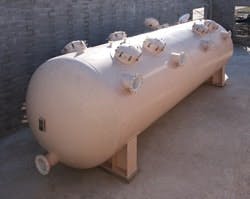Located on the banks of the Rock River, 90 miles west of Chicago, Rockford Ill., is home to more than 168,000. Since the 1930s, the company now known as Layne Christensen has been instrumental in developing Rockford's potable water supply, which is drawn from shallow, unconfined and deep sandstone aquifers through 39 active wells.
When the city needed to bring five wells into compliance with the U.S. EPA’s revised Radionuclides Rule, Rockford took the opportunity to improve water quality and determined that five other wells required treatment for higher than desired iron and manganese levels. After pilot testing to compare catalytic media with traditional mixed media, LayneOx catalytic media was determined to be the most cost-effective treatment solution.
Rockford’s radium, iron and manganese removal plants were designed by Strand Associates Inc., Madison, Wis., and Layne was awarded a contract to engineer and fabricate the treatment equipment. The equipment is comprised of ten plants with treatment capacities ranging from 1,200 gal per minute (gpm) to 2,100 gpm.
The five new radium removal plants will enable Rockford to maintain compliance with the U.S. EPA’s Radionuclides Rule. The Rule regulates the combined levels of radium 226/228 to a maximum contaminant level (MCL) of 5 pico Curies per liter (5 pCi/L). Based on pilot tests, typical performance brings a well with median concentrations of 6-10 pCi/L to a treated level of 2 pCi/L, far below the U.S. EPA’s MCL.
For the iron and manganese removal plants, currently above the secondary MCLs of 0.30 parts per million (ppm) and 0.05 ppm respectively, the catalytic media enables the filters to operate at a higher loading rate of 6.25 gpm/sq ft, with no detention basin and with no need for a permanganate feed. The catalytic nature of the filter media helps with oxidation and the removal of manganese, reducing equipment size, minimizing the accessory equipment required and reducing the building size and cost.
The catalytic filters, engineered and fabricated by Layne, have 30-in. bed depths of LayneOx and use pressure aeration and sodium hypochlorite to oxidize any iron and manganese in the water. Radium is removed using the hydrous manganese oxide (HMO) process. Five of the filters feed HMO to remove radium and any iron or manganese, while five of the filters remove manganese and/or iron from the water. In total, these treatment systems will treat and supply up to 27 million gal per day of potable water. Layne also provided start-up services and operator training.
Today, all 10 of the plants are online and performing within design parameters.
For more information, contact Jim Groose at [email protected].

